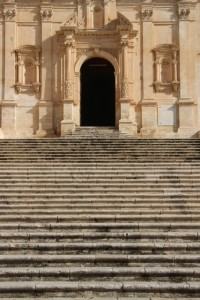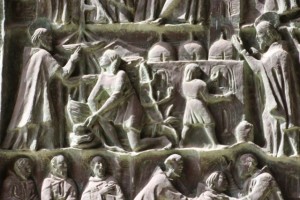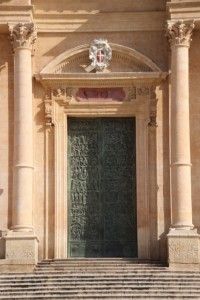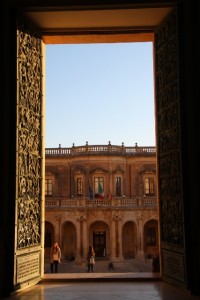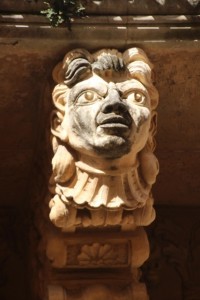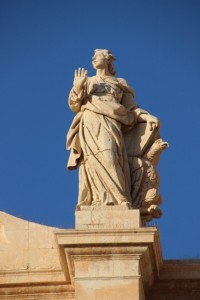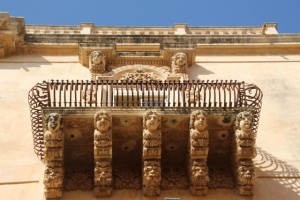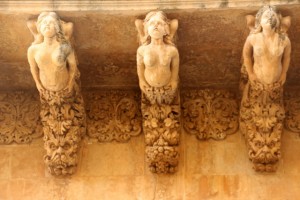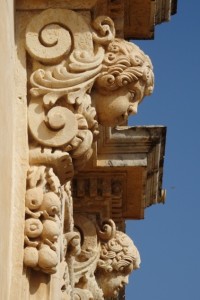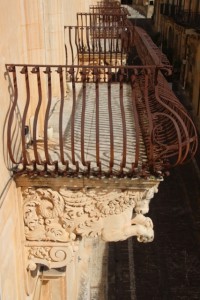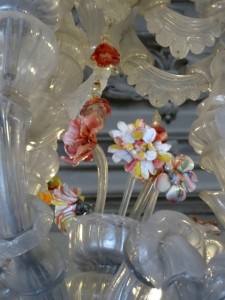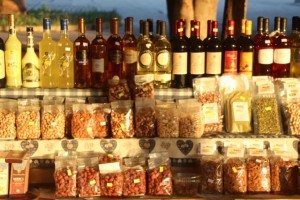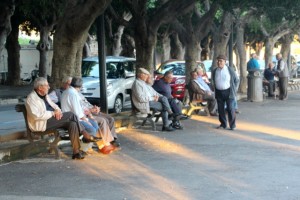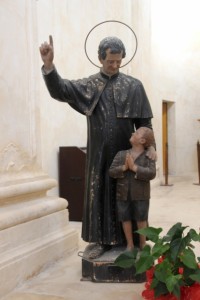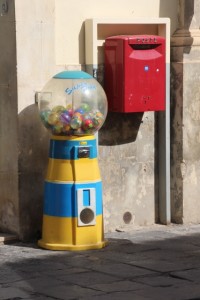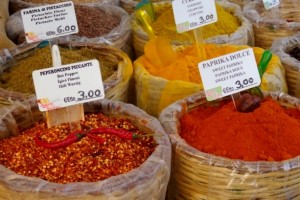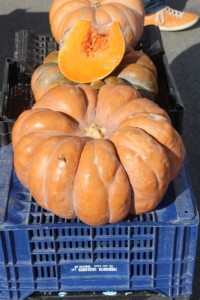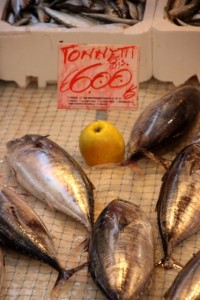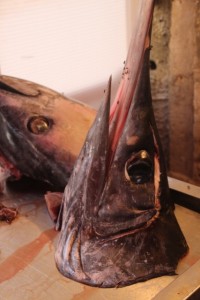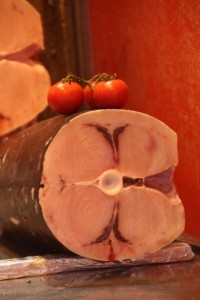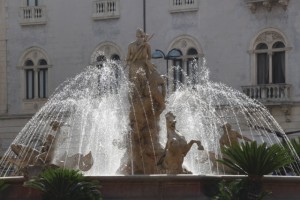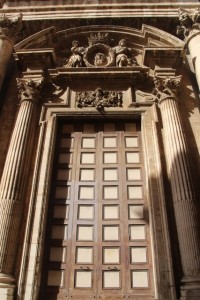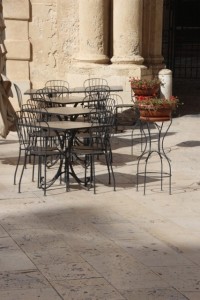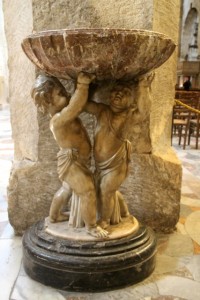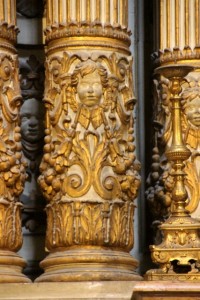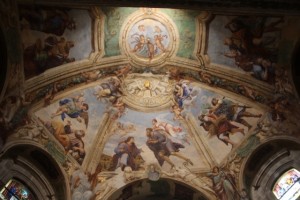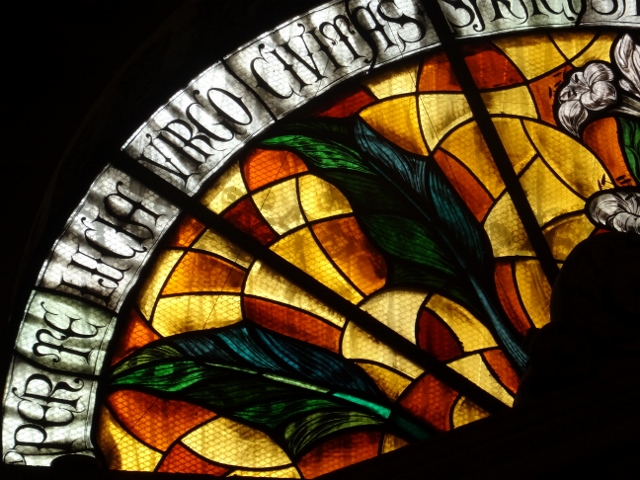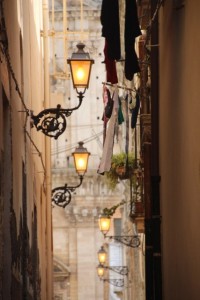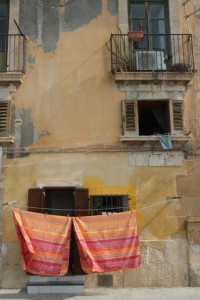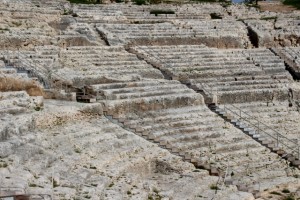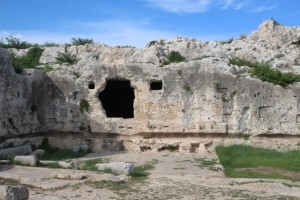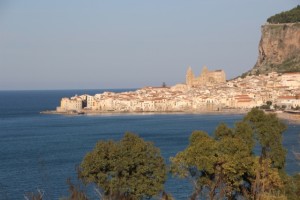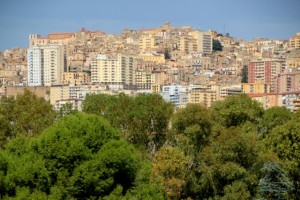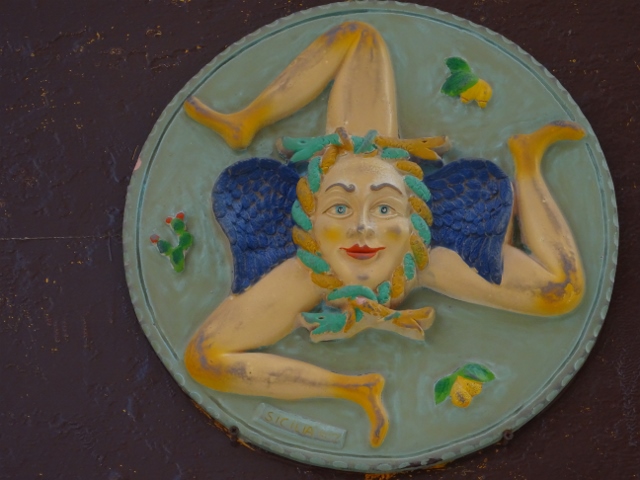Before we came to Palermo we spent four days in the south-east of Sicily. We had based ourselves in Noto, one of the many so-called hilltop towns. Noto, like so many other towns in this part of the island, suffered a devastating earthquake in 1693, a cloud with a silver lining, because the associated total destruction paved the way for a rebuilding effort that has created a series of most beautiful Baroque town centres, of which the Corso Vittorio Emanuele, Noto’s main street, is perhaps the most stunning example. The street, now a pedestrian area, is lined by elegant palaces as well as many churches, including the cathedral. 18th Century balconies are decorated with stuccoed horses, heads or nymphs. And despite the overbearing presence of the many tourists, the local population still participates in the daily evening stroll.
But the gem of the southeast is Syracuse, and more specifically its small peninsula, Ortygia. This is the old city centre, with narrow streets connecting spacious piazzas – squares -, with their fountains and palaces, many also dating from shortly after the earthquake. There are lots of buildings worth visiting, not in the least the Duomo, which started its life as a Greek temple and has been transferred over the centuries into Syracuse’s fabulous cathedral. But best is to just wander through the alleys, from the street market area on one side of the peninsula to the castle at the far end, admiring the carved doors, the balconies, the windows, the hidden treasures.
In the outskirts of Syracuse is the Parco Archeologico della Neapolis, which as far as I am concerned chiefly made an impact because about everything there is to visit was closed, after we – like everybody else who comes by car – had been directed to the parking at one side of the complex, only to have to walk all the way to the other side, not only past the various archaeological sites – which we didn’t know yet, were closed – but also past a whole array of restaurants and tourist shops to the ticket office. And then back again, to see the few parts of the complex that were not closed to the public. Of which the most impressive one was a Greek theatre with the seats entirely carved in the rocks, which must have been quite an exercise at the time (compared to which walking from one side of the complex to the other is quite insignificant – but you only realise that later, of course).
There are lots of other places we could have visited in Sicily, with more time on our hands. We didn’t walk up the Etna volcano; we didn’t visit the several small island groups, the Egadi Islands or the Aeolian Islands. The guidebooks describe many more Baroque hilltop towns worth seeing, and I am sure there are more Phoenician, Greek and Roman ruins, too, as well as the many Norman castles. All testimony to the importance of Sicily in earlier times – Syracuse was the preeminent city in antiquity, more significant than Athens or Corinth, Palermo was second only to Constantinople in the early Middle Ages. A history which is hard to square with the current status, as one of the poorer areas of Italy, architecturally dominated by shoddy, ugly and inferior housing complexes built by Mafia consortia that needed whitewashing opportunities for their ill-gained riches, in cohorts with local government. But even that empire, as so many before, is crumbling. What remains is a great tourist destinations, and a place to come back to.
